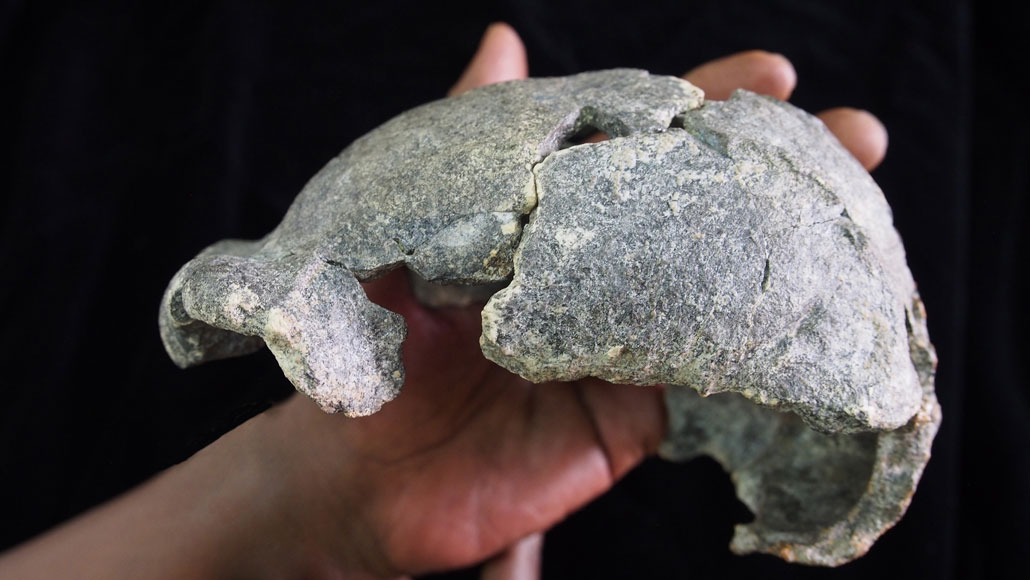New fossils and artifacts show Homo erectus crafted a diverse toolkit
Some stone tools have a single sharpened edge, while others consist of double-edged designs

Stone artifacts found at an Ethiopian site alongside this 1.6-million- to 1.5-million-year-old Homo erectus braincase indicate that this hominid made an array of simple and more complex tools, researchers say.
Michael Rogers/Southern Conn. St. Univ.